I don't think it is possible to sort a scene based on a single x,y value for each object if some of them can be long enough that one end should be at a different depth than the other. For instance, consider how you'd handle the rendering if the brown chair in your picture was moved one square down-left (to the square between the blue chair and the long couch). It would be deeper in the scene than the red table behind the couch, but would need to be rendered on top of the couch, which would need to be on top of the table.
I think there are two simple solutions:
- Design your
levels using only one sort of overlap for large objects. For
instance, you could specify that an object's depth is based on its
nearest corner, which would require you to avoid putting things in
front of its most distant bits (since it will render on top of them).
Or you could stick with your current code (which seems to use the
most distant corner for depth) and avoid putting anything behind the
nearer parts. You may still have trouble with characters and other
objects that move around though. You might be able to make the
troublesome tiles inaccessible if you're careful with your design,
but in some cases this may be too restrictive.
- Break up your large objects into smaller ones
which would have their own depths. You will probably want to go right
down to 1x1 pieces, each of which will have an unambiguous depth. You
might choose keep the larger objects in the code as invisible
containers for the smaller pieces, or they could be eliminated
entirely, whichever makes it easier for you to load up and enable
interaction with the various bits.
Splitting larger objects in to 1x1 sized pieces can also be nice since you can make them modular. That is, you can build differently sized objects by putting together 1x1 pieces in different combinations. If you cut your 2x1 tables in your image in half vertically, for instance, and created a 1x1 middle tile that fit in between them, you could stretch the design out to 3x1 or 10x1, depending on how many times you repeat the middle tile. There's a lot of other ways to make tiled graphics look good with only a modest amount of art required.
